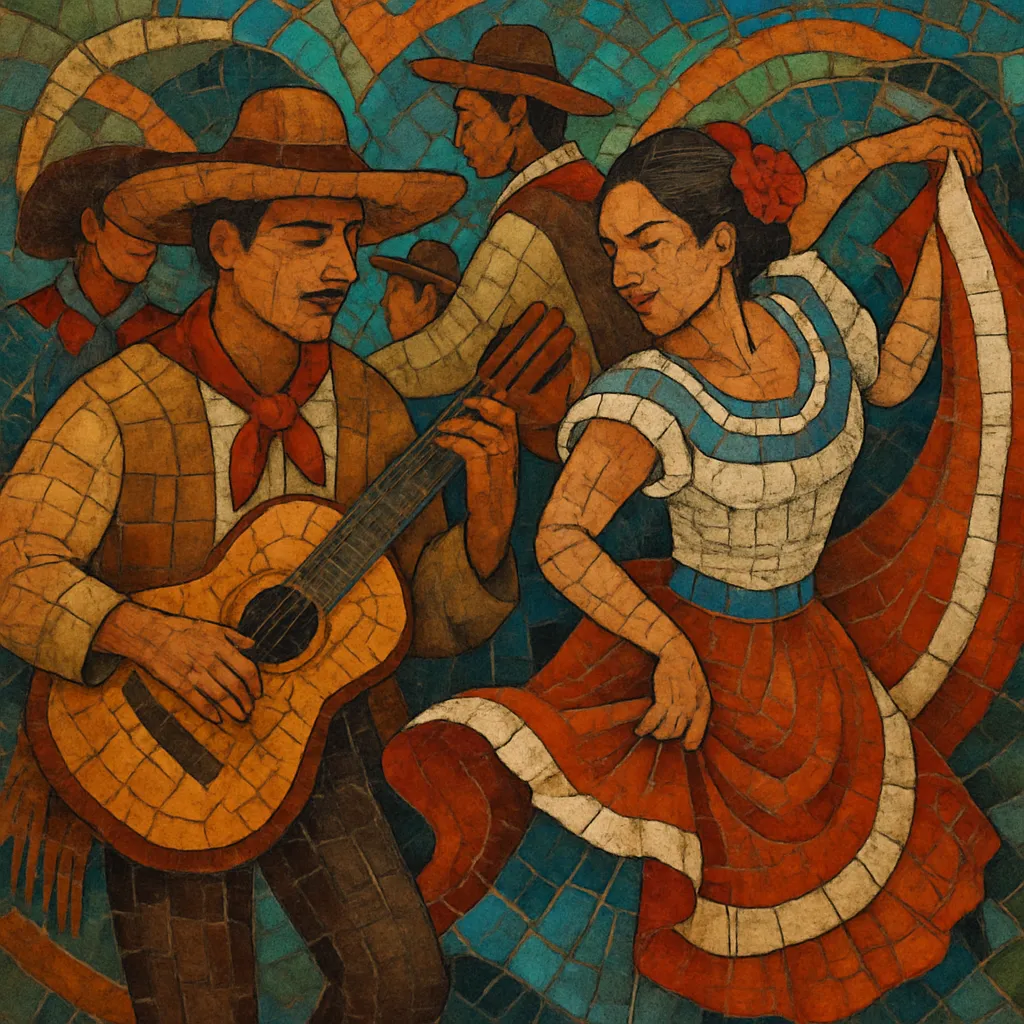Chilena is a lively song-and-dance genre from Mexico’s Costa Chica region (on the Pacific coast of Guerrero and Oaxaca). It blends Afro‑Mexican aesthetics with the choreography and metric feel of South American cueca/marinera traditions.
Typically set in a bright 6/8 (often in sesquiáltera, the interplay of 6/8 against 3/4), chilenas feature flirtatious call‑and‑response vocals, shouted interjections (gritos), and witty, picaresque coplas. Performances alternate sung verses with instrumental refrains for dancing, highlighted by buoyant syncopations and heelwork (zapateado) while dancers brandish handkerchiefs.
Instrumentations vary by locality: coastal string ensembles use requinto (lead guitar), rhythm guitar, and bass with handheld percussion (pandero, güiro, quijada), while Oaxacan and Guerrero wind bands (bandas filarmónicas) render chilenas with clarinets, trumpets, trombones, tuba, and snare/bass drums. Harmonies are mostly I–IV–V in major keys, supporting tuneful, diatonic melodies designed for festive community dances and civic celebrations.
Chilena crystallized in Mexico’s Costa Chica during the mid‑1800s, when Chilean sailors and migrants traveling to and from Pacific ports (especially during the California Gold Rush era) brought the cueca—descended from the older Peruvian zamacueca/marinera. Local Afro‑Mexican and mestizo communities adopted the couple dance and its characteristic 6/8 swing, blending it with regional poetic forms and dance practices.
Along the coast, guitar‑led conjuntos emphasized a crisp, danceable groove with sesquiáltera (6/8–3/4 cross‑rhythm), humorous coplas, and gritos. In Oaxaca’s Mixteca and coastal towns, powerful civic wind bands (bandas filarmónicas) incorporated chilenas into their repertories, orchestrating melodies for brass and woodwinds and standardizing forms for fiestas, processions, and patron‑saint celebrations.
Through the 20th century, chilena became a regional emblem alongside sones and jarabes. Radio, commercial recordings, and touring municipal bands helped codify classic pieces (e.g., well‑known chilenas from Guerrero and Oaxaca), while local dancers preserved the pañuelo choreographies and playful courtship gestures.
Today chilena thrives both in traditional community settings and on stage. String ensembles and bandas filarmónicas continue to perform it at weddings, town fiestas, and civic events. Contemporary Oaxacan and Afro‑Mexican artists have revived and recorded chilenas, while youth and women’s wind bands sustain and innovate the style, keeping its bright 6/8 swing central to Costa Chica identity.


